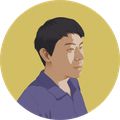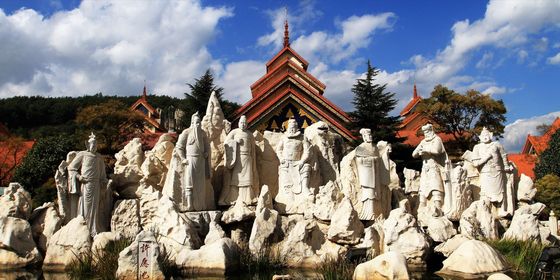The dialect of China’s “guest families” is a “living fossil” of ancient Chinese
For over a decade, The World of Chinese has been offering modern Chinese-language instruction from street talk to social phenomena to character tales. With 129 officially recognized dialects (方言), though, we have barely scratched the surface of everything there is to learn.
On select Fridays, TWOC will be presenting a basic lesson on speaking like a native of a certain region of China.
When visiting southeastern China, and diaspora Chinese communities around the world, one may well hear the Hakka dialect. Referred to as kejia (客家, “guest families”) in Mandarin, the Hakka people migrated from China’s north to the south over many centuries, and are now settled mainly in Fujian, Guangdong, and Jiangxi provinces, with sizable overseas populations in Malaysia, Thailand, and Indonesia.
The Hakka language family, one of the seven major regional dialects of Chinese, is often considered a “living fossil” of ancient Chinese from the Central Plains, retaining certain characteristics of pronunciation from the older language. Spoken by an estimated 96 million people as of 2019, Hakka is not mutually intelligible with Mandarin, Yue, Wu, Min, or other branches of Chinese, though northern varieties of Hakka are sometimes understood by speakers of southern Gan dialects in Jiangxi province.

Sunrise on Mount Liangye, one of Wuping’s best-known attractions (by Li Guochao)
Being primarily used in scattered and secluded regions, where communication may be limited to the local area, Hakka has developed numerous regional branch dialects within itself in places such as Guangdong, Guangxi, Hainan, Fujian, Sichuan, Hunan, Jiangxi, Guizhou, Hong Kong, and Taiwan, as well as countries such as Singapore, Malaysia, and Indonesia. Among these, the Meixian variety spoken in Guangdong’s Meizhou—the “capital” of the global Hakka diaspora—is generally recognized as the standard.
Some features of language are shared between the various Hakka dialects:
- The first person pronoun, 我 (wǒ) in Mandarin, is pronounced nga or ngai (a nasal stop which doesn’t exist in Mandarin, but found in some other dialects such as Shaanxi and Cantonese), depending on the dialect. In writing, it’s approximated with the character 捱, 涯, 厓, or 崖.
Hakka phrases are often in the reverse order of their Mandarin counterpart.
Guest: 人客 (Hakka), 客人 (Mandarin)
Dust: 尘灰 (Hakka), 灰尘 (Mandarin)
Weight: 重轻 (Hakka), 轻重 (Mandarin)
Hakka has many overlapping monosyllabic quantifiers.
Each day: 日日 (Hakka), 每一天 (Mandarin)
Each bowl: 碗碗 (Hakka), 每一碗 (Mandarin)
Unlike Mandarin, where “more” and “less” is prefixed before the verb, Hakka often places “more” and “less” after the verb.
“We will have guests in the afternoon, so cook more dishes”
“当昼有人客,煮多两样菜” (Hakka)
“中午有客人来,多做两道菜” (Mandarin)
“Stop talking so much, you won’t lose out”
“讲少两句,唔会输人” (Hakka)
“少说两句话,不会输给人的” (Mandarin)
Though they share features, regional varieties of Hakka may not even be mutually intelligible with one another. Often, location is the main factor that determines intelligibility. Today’s native speaker, Ms. Deng, hails from Wuping, a county in Longyan city, Fujian province, where 75 percent of inhabitants are Hakka. The Wuping dialect is intelligible to speakers from neighboring counties and cities, including Meixian, which is just over the border in Guangdong:
- Come to my place to eat tonight, I made bojiban and purple yam buns.
夜埔转涯屋下食饭啊,涯奏了簸箕粄嘎薯包子。
Ya bu zuan nga wu ha shi fan, nga zou le bo ji ban ga su bao zi
Bojiban (簸箕粄), literally “dustpan roll,” is a Wuping’s delicacy that looks similar to Cantonese rice noodle roll, or changfen.
2. Are you free tomorrow? Let’s go hike Mount Liangye together.
天公有函得冇?一哈西爬梁野山。
Tian gong you han de mo? Yi ha xi pa liang ye san.
When asking if someone has something, the noun is enclosed between 有 (have) and 冇 (have not). The equivalent in Mandarin would be, 有没有__ or 有__吗.
3. Grandma, I bought you a pair of shoes, can you try and see if they fit?
家家,涯腾很每了一森新哈,很此一哈走得凑某 。
Jiajia, an ten hen mei le yi sen xin ha, hen ci yi ha zou dei cou mo.
The term of address for one’s grandmother varies by family. Mrs. Deng uses 家家, but other variations include 阿婆 (Ah-po), 欧哇 (Ouwa), and 婆婆 (Popo).
4. I forgot the keys, and now I can’t go in.
锁匙天帮斗类大,今下念唔得 。
Sou si tiang bang dou lei da, jin ha nia en de.
Hakka share some words with Cantonese and other dialects, such as Southern Min. For example, 锁匙 for “key” (钥匙 in Mandarin) and 唔 for the negative particle (不).
5. Her clothes are prettier than mine.
佢个衫裤比捱的过靓 。
Ji gei san ku bi nga gei gou jiang.
衫裤 means “clothes” in Hakka, combining 衫 (shirt) and 裤 (trousers/pants).
Cover image of Yanqian town, Wuping county, by Li Guochao












